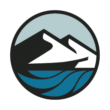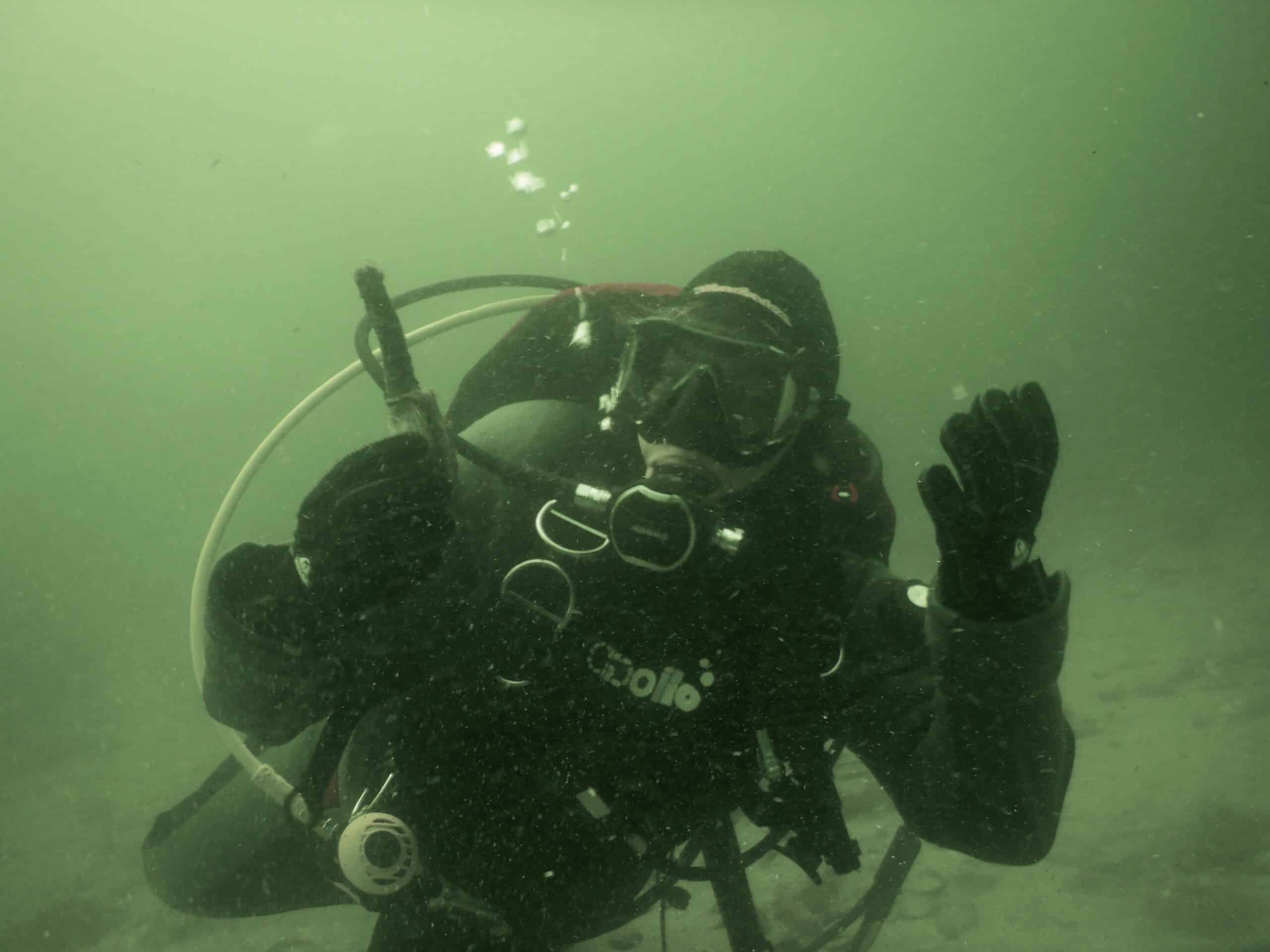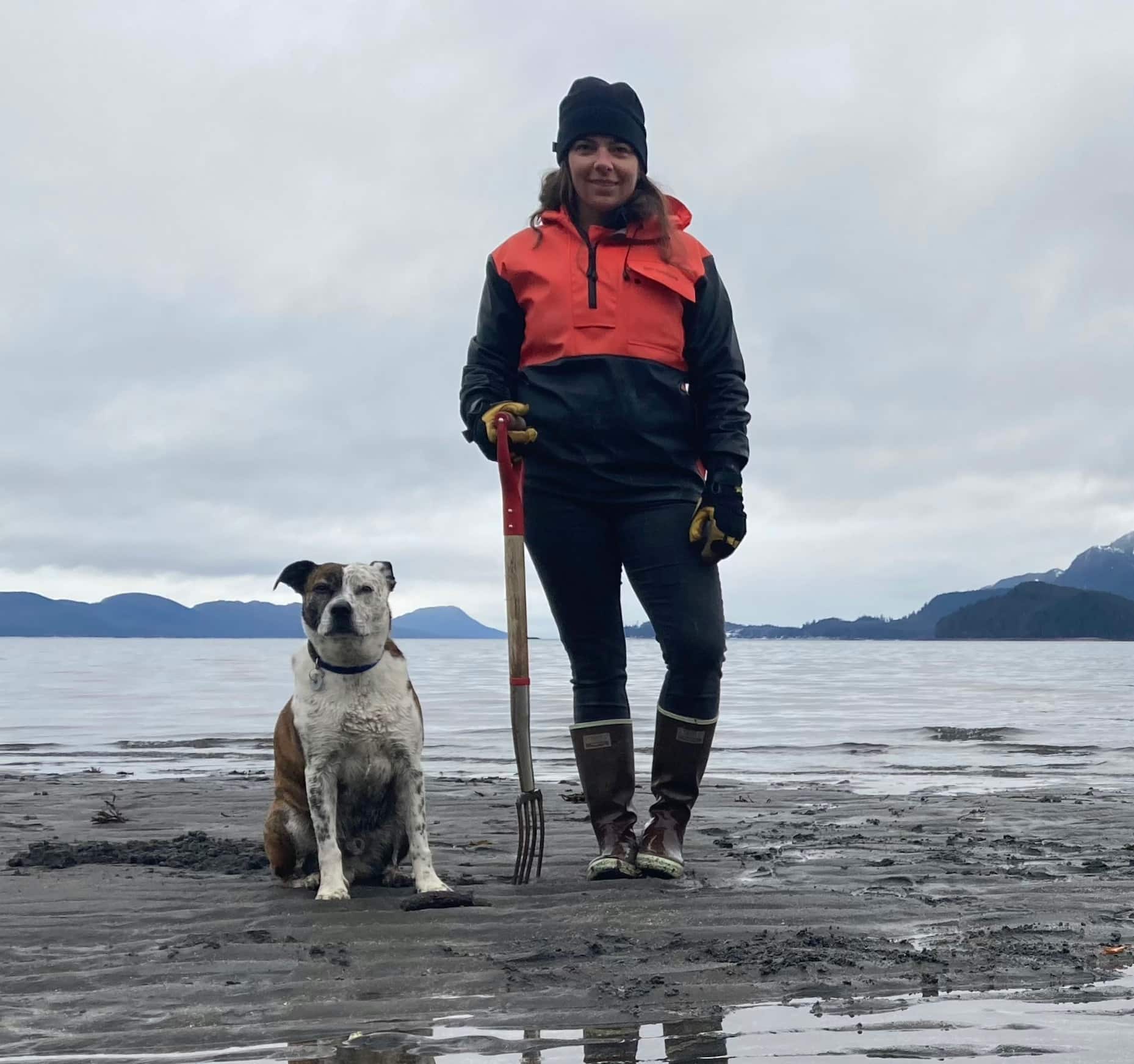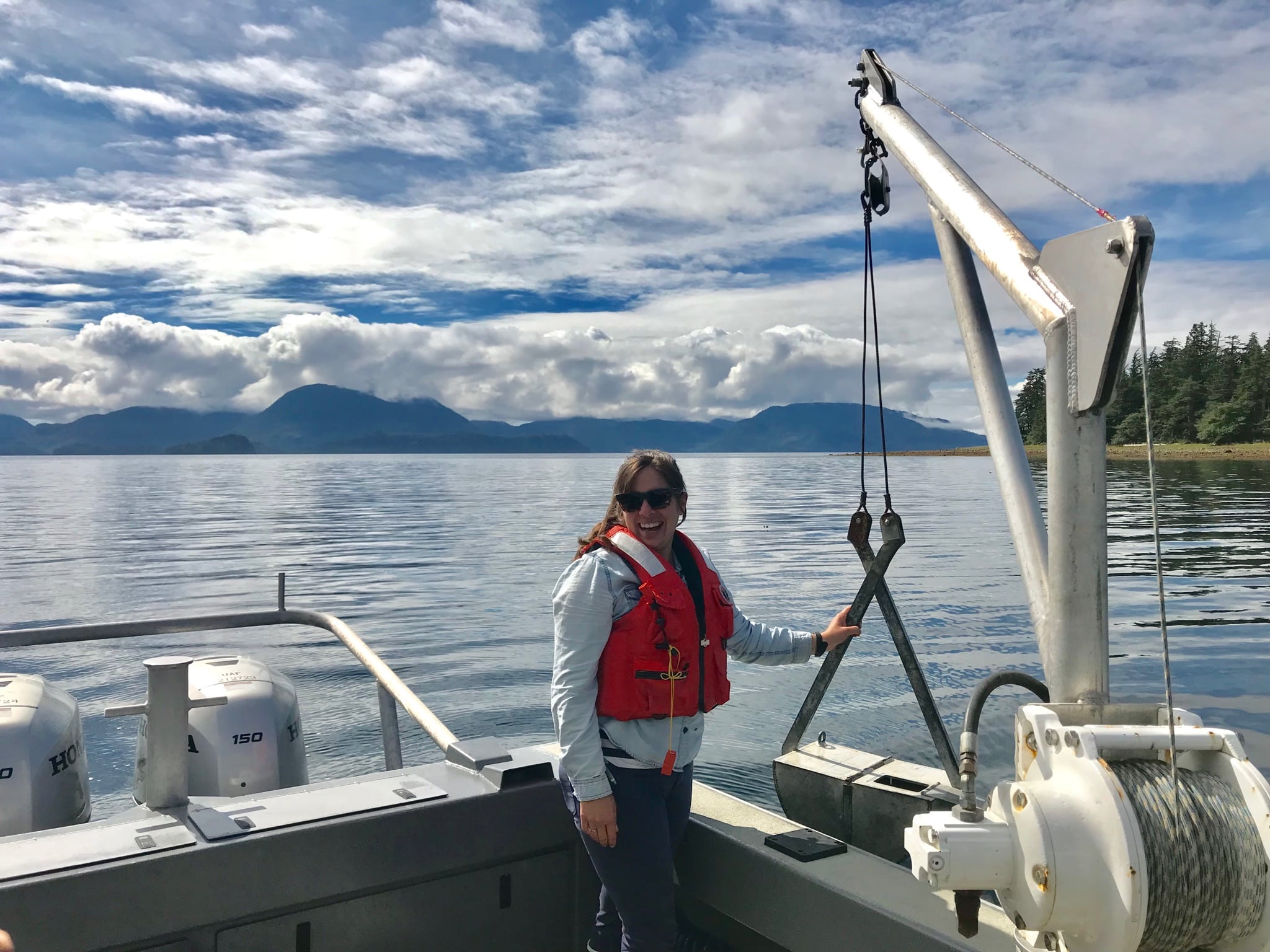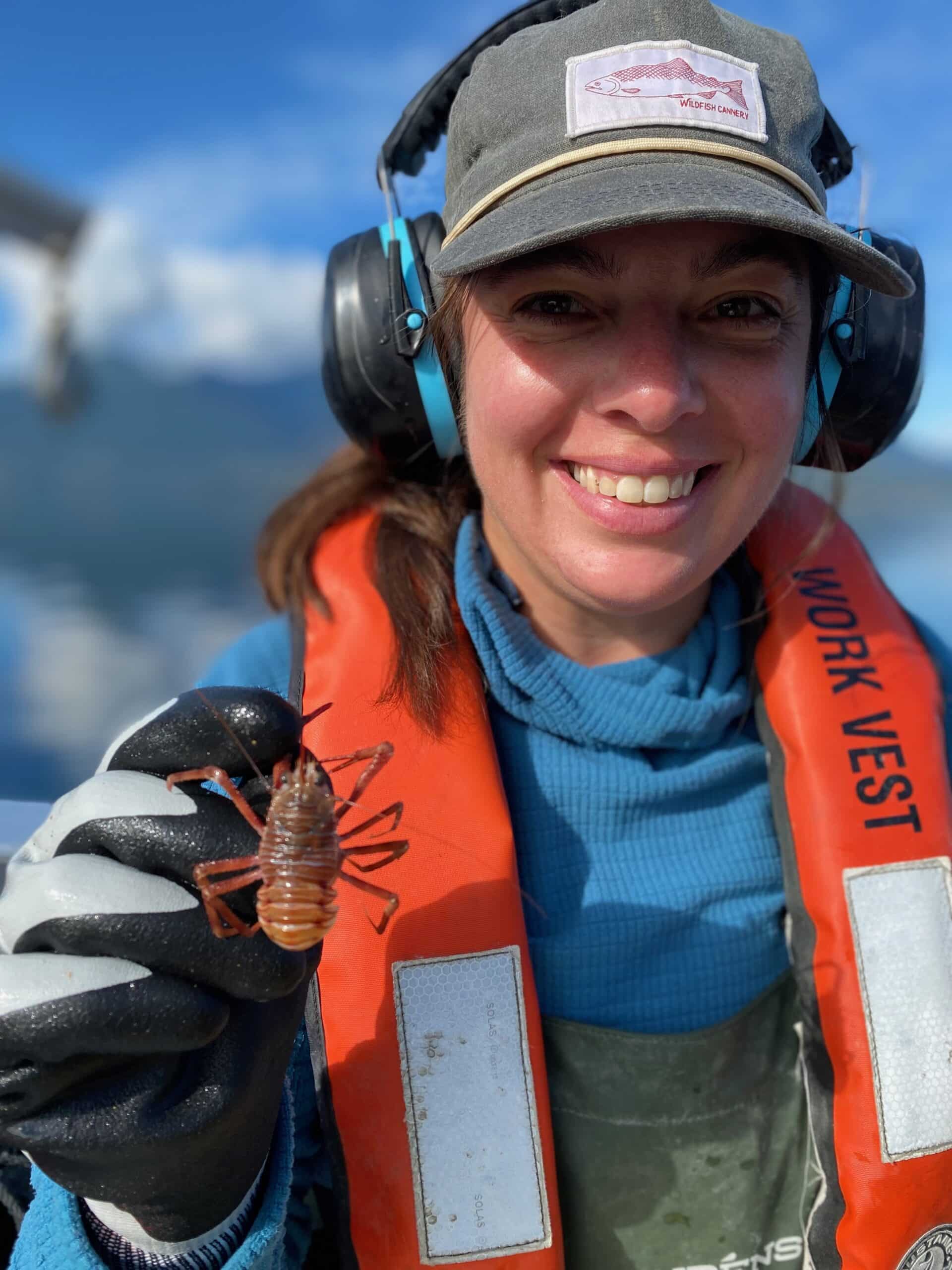As a young person, Courtney Hart always loved scouring the shore for creatures. Eternally fascinated with the intertidal space where the water meets the shore, she grew up learning about the place where evolutionary adaptations make for some of the most resilient, unique, and surprisingly edible creatures on the planet: shellfish and crustaceans. This ultimately led her to a career in managing those creatures, as well as the people interested in harvesting them.

Of course, shellfish and crustaceans weren’t always her focus. Growing up, she “was a bit of a dolphin girl,” which led her to pursue a career as a marine biologist. But when she had the chance to swim alongside dolphins in college, she found herself more fascinated with the conches and the sea stars along the ocean floor.
“It wasn’t until I started researching that I realized, I’m going to study shellfish,’ and so through my interest in studying, but also actually eating the things that I liked… I was like, ‘Maybe instead of fish, I’ll be a shellfish person,’” said Courtney
Courtney found herself focusing her master’s degree on a project involving oysters. Eventually, she went to Alaska to complete her PhD in fishery science, but her thesis focused on paralytic shellfish poisoning and toxins carried by clams. Her studies led her to partner with geoduck divers and learn about clamming from community and Tribal members in the region.
Courtney’s Job
Her experiences in Alaska eventually led Courtney to Washington. She now works for the Port Gamble S’Klallam Tribe, as the crustacean program manager. The Port Gamble S’Klallam Tribe has harvested shellfish fish—from clams, crabs, oysters, and shrimp, to both native Olympia oysters and non-native pacific oysters— for both subsistence and commercial purposes since time immemorial. Courtney’s job is to balance the needs and legal requirements of Tribal, commercial, and community members as they harvest from Washington’s shore.
Courtney’s work means traveling around the region to track and assess the myriad fisheries in which Port Gamble S’Klallam fishers participate. Sometimes she accompanies Tribal fishers when they check their Dungeness crab or shrimp pots to assess catch rates and bycatch. Other times, she helps with clam and oyster surveys throughout the Tribe’s usual and accustomed fishing region, including Hood Canal, the Strait of Juan de Fuca, and even into the San Juan Islands.
This on-site work means plenty of special experiences for Courtney. On a recent beach walk at low tide while looking for a place to track crabs, Courtney noticed the ground bouncing and moving under her feet. She recalls thinking, “Oh my, there are so many clams here right now.”
Courtney is also a scuba diver and recalls her diving partner looking at her in confusion on a recent dive near the Mukilteo ferry terminal. While the class and her partner were more fascinated by the fish and octopus, Courtney gravitated towards the massive geoducks and horse clam siphons peeking out of the sediment.
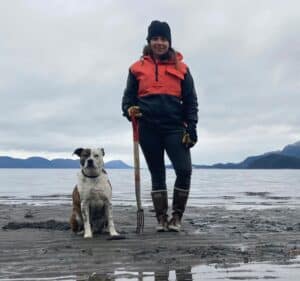
Managing Fishing and Rights
As a fisheries manager for a Tribe in Washington State, it’s Courtney’s responsibility to coordinate with other fishing interests, including commercial, Tribal commercial, Tribal subsistence, and recreational fishers. The 1974 Boldt Decision reaffirmed Tribal treaty rights, enshrining Tribes and the state as co-managers of Washington’s fisheries. The decision confirmed the Tribes’ rights to half of the catch and designated management authority for monitoring and tracking their own take. This requires managing everyone who’s trying to take from the same pool of resources. That makes Courtney’s job tricky.
“We have a lot of people who harvest for subsistence. They’ll go out, and we have to keep track of every pound of every resource that we take. So, every bucket of clams, every basket of shrimp, every individual salmon caught, that’s all accounted for because of the way that Washington has delineated management responsibilities,” said Courtney. “The state counts, and we count.”
These counts are meant to ensure an accurate and legally appropriate harvest, but Courtney has to balance important and sometimes conflicting rights. “Tribes are growing, membership is growing, enrollment is growing, just like any group of people will…and being a Tribal member comes with its benefits, including treaty rights to fishing. But we don’t have a growing resource—we just have a growing population,” said Courtney.
Courtney must manage shellfish in a way that prioritizes subsistence and ceremonial rights. However, this may mean that Tribal fishers who have worked their whole lives in a commercial context may not be able to take enough to make a living. “You can’t tell people, ‘No, you’re not allowed to exercise your treaty right,’ but we also cannot perpetually increase our fleets and sustain viable commercial fisheries,” said Courtney.
Courtney also finds that many non-Tribal folks have misconceptions about Tribal fishery management. When Courtney tells people that she manages crab fisheries for a Tribe, they sometimes scoff and “express a belief that Tribal fisheries take ‘everything.’” “It’s really shocking that people don’t understand that Tribes are not taking more than their allocated share. They’re taking exactly half,” said Courtney. She highlights that a Tribal fishery opener typically lasts a couple of days in designated harvest areas, so it’s much more visible compared to recreational fishers spread out across a region.
Enhancing Populations
One of the best ways to increase the number of crabs, clams, and other shellfish that everyone can harvest each year is to increase their overall population. To that end, she’s always on the lookout for new ways to raise the resilient bivalves.

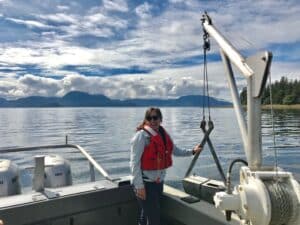
At a recent conference, geoduck farmers reported their method for raising baby geoduck—“one of the cutest things in the world,” according to Courtney—had found accidental success in attracting cockle clams. Using similar tactics, Courtney’s team is trying out different ways to increase the harvest to match the demand.
The situation isn’t without hope. “There are some species that may end up being winners in a changing climate,” said Courtney. “Our shrimp population, especially in Hood Canal, has been very stable and possibly increasing, and there’s actually a lot of shrimp and a lot of people harvesting them.”
Women in Science
Courtney feels fortunate that she joined the maritime industry and scientific fields when she did. “Academically, I think I just came through at a golden age where all the women who dealt with male-dominated departments are now in those departments,” said Courtney. “I’ve only ever had female advisors, and the majority of the grad students I went to school within the fisheries program were women… I think it’s feeling a little bit more equal.”
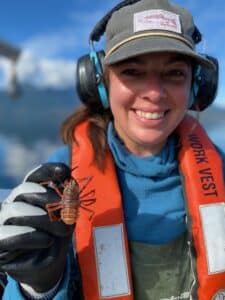
“If you look at the people who harvest commercially for our Tribe, we do have a lot of female clammers, but when you start getting into any of the more valuable resources, it’s completely male-dominated,” Courtney said. “Professions on the water, I do find to be mostly male.” Courtney also said that when jobs require a high “entry cost,” such as the cost of purchasing a boat, they tend to be more male-dominated.
“I’ll just caveat that by saying…I do not feel diminished or intimidated by the male-dominated world,” said Courtney. “I find that I enjoy surprising men with my ability to splice a line or change the oil filter.”
Courtney’s work is complex and tricky. “It’s not easy, and it is not without conflict. [There are] a lot of issues that my scientific background cannot solve, so I’m learning a lot as a Tribal manager,” Courtney said. “But I also really appreciate that the tribal members who represent communities and cultures that are alive and flourishing in the Pacific Northwest for thousands of years get to continue to do that.”
If you liked this story, you might enjoy other stories about Women on Washington’s Working Waterfronts. Hear from Anita Luvera about the work it took to outfit a fishing fleet as a young woman, or read the story of Thea Foss, who pioneered one of the world’s largest tugboat companies, starting with just a rowboat.

